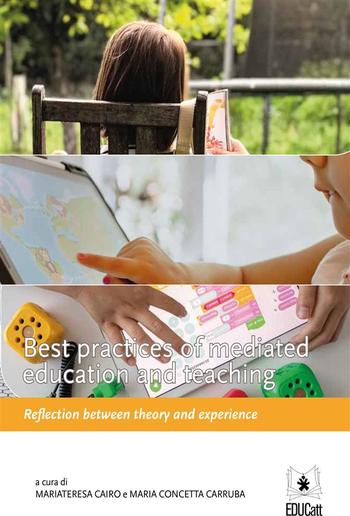
AA.VV. - Best practices of mediated education and teaching
Best practices of mediated education and teaching
Reflection between theory and experience
AA.VV.
Descripción
This Conference highlights three elements, as shown in the title: the best practices, the educational mediation and the relationship between theory and practice. All knowledge systems are constructed based on social practices adopted within given communities, i.e., each social group develops a knowledge system that represents and identifies the ideas, facts, customs, and ways of communicating that are characteristic of them and that enable them to work, i.e., to think, create, act, and interact to the best of their ability. We give the name to best practice, when they permit to realize a very good job, for example with children or fragile and vulnerable people.The best practice of inclusion should be known: they foresee the possibility of learning from each other, of sharing experiences, of emphasize the problem but also the most meaningful things.The matter of educational mediation is a central: we need educators, teachers and adults that are able to realize the process of mediated education, which can promote the change that allows to approach to other people.To use a metaphor, the educator who realizes the mediated education, regardless used tools (technologies, specific methods, languages and cultures, animals, environmental facilities) promotes the match, to enable the correct living distance which allows the educational relationship.In Italian language we use the word “play” to mean not only the ludus, but also the space between two elements, for example the screw and the bolt, that allows the screwing. If there isn’t space, it isn’t possible coming together, talking about something, gathering for a meeting. To reach this play, a screwing not so much narrow and not so much large, it seems like an interested metaphor for what mediation is: the space which allows the gathering is the space of mediated education.Last but not least the reflection on theory and experience. It is necessary to enhance reflective practices, that bring out the implicit thinking, that hides in educational experiences. A thinking which is implicit cannot be shared, cannot promote the spread of best practices and cannot encourage the growth of knowledge.If this implicit thinking can be said, can be expressed, can be stated it becomes an heritage of all and can enhance the knowledge in a specific area. There are three regulative axes of the reflective process: the covenant of trust between teacher and pupil, which is the contractual relationship that binds a student to his or her teacher; the balance between affective support and educational guidance, which is the professional dimension of the educator/teacher; and finally, the organizational dimension of a service, which allows for the elaboration of the experience.From the Greeting from full Professor Simeone Domenico Headmaster of Facoltà di Scienze della Formazione, Università Cattolica del Sacro Cuore, Italia

